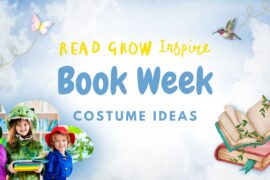A Joyful Guide to Australian Animals for Curious Parents and Kids
G’day, mates! Are you ready to embark on an exciting exploration of the land down under and learn about the unique animals that call Australia home? As a parent, educating your little ones about wildlife can foster a sense of wonder and respect for the environment. Australia’s animal kingdom is vast and vibrant, and this guide is designed to be your family’s perfect companion on this educational adventure.
Australia’s Unique Ecosystem
Brimming with biodiversity, Australia’s ecosystems are unlike anywhere else on Earth. From the scorched red soil of the Outback to the lush rainforests in the northeast, this continent boasts an array of habitats that support a plethora of fascinating creatures. Understanding this environment is key to appreciating the animals that live here.
Why Australia’s Animals are Unique
Did you know that more than 80% of Australia’s animals, mammals, reptiles, and frogs are unique to the continent? This is due to millions of years of geologic isolation. As you and your family delve into the world of kangaroos, koalas, and kookaburras, you’ll discover the beauty of evolution and adaptation.
Iconic Mammals and Marsupials
When thinking about Australian animals, fuzzy marsupials often spring to mind. These endearing creatures are not only important to Australian biodiversity but also to cultural identity. Let’s hop into the fascinating world of some of these animals.
Kangaroos: Hopping Marvels
Kangaroos are synonymous with Australia. These hopping mammals are incredible to watch and even more amazing to learn about. Discover how these creatures have adapted to the Australian landscape and how mother kangaroos carry their young in the safety of their pouches.
Koalas: Tree-Hugging Treasures
Who can resist the charm of the sleepy koala? These cuddly animals spend most of their time up in the eucalyptus trees. We’ll explore why these leaves are essential to koalas and how these animals play a critical role in their ecosystem.
The Wondrous Wombat
Wombats may not be as famous as kangaroos or koalas, but these burrowing buddies are just as intriguing. Learn about their unique digging abilities, their cube-shaped poo (that’s right, cubes!), and how they fit into the Australian landscape.
Dazzling Birds
Birds in Australia aren’t just about the bush. With colorful plumage and distinctive calls, birds like the Rainbow Lorikeet and the Laughing Kookaburra add an audible and visual tapestry to the land. Teaching kids about their role in pollination and the food chain is vital for understanding our ecosystem.
Emus: The Giant Runners
Despite their inability to fly, emus are impressive creatures. Did you know they can run up to 50 km/h? Explore the life of the emu, their habitat, and their sparkling blue eggs.
Cockatoos: The Raucous Communicators
Cockatoos are known for their intelligence and personality. These parrots add character to the forests and urban areas alike, communicating with loud calls. Learn about the different species of cockatoos and the ways they interact with their environments.
Penguins in Australia
Yes, Australia has penguins! The little penguins, the smallest penguin species, can be found on some southern shores. Understanding how they thrive in Australia’s waters is a delightful dive into avian diversity.
As you page through this guide, you’ll be equipped with fun facts, conservation messages, and activities to engage your kids in learning about Australian wildlife. Embrace the opportunity to instill a love for animals and nature that your family will cherish for a lifetime.
Stay tuned, as we unpack more about reptiles and marine life, and remember: The world of Australian animals is a vibrant reminder of the beauty and diversity of our planet. Let’s treasure it and pass that appreciation on to the next generation!

Five Things Parents Should Know in Preparing for a Trip to Meet Australia’s Animals
1. Safety Comes First
While Australian wildlife is captivating, it’s also crucial to prioritize safety. Always visit animals in their natural habitats with a reputable guide or in recognized wildlife parks.
2. Respect the Wildlife
Teach your children the importance of respecting animals and their homes. Never feed or try to touch wild animals, as this can be dangerous and disrupt their natural behaviors.
3. Dress Appropriately
Ensure your family is dressed for success! Depending on where you visit, you may need hats, sunscreen, good walking shoes, and insect repellent. Dressing correctly can protect you from the elements and any critters.
4. Learn Before You Go
Knowledge is power! Learning about the animals you’ll encounter before your journey can enrich the experience. It can excite your family and provide meaningful context during your encounters.
5. Support Conservation Efforts
Visiting conservation areas or wildlife sanctuaries not only provides a more authentic experience but also helps support the preservation of Australia’s unique wildlife for future generations.
Understanding Australia’s Reptiles
Australia is known for its diverse species of reptiles, from the iconic saltwater crocodile to the myriad of lizard species dotting the continent. Discovering how these fascinating creatures have adapted to survive in the harsh Australian climate can be an exciting part of your wildlife education journey.
The Intriguing Saltwater Crocodile
The saltwater crocodile is the largest of all living reptiles and a master survivor, inhabiting both saltwater and freshwater regions of Australia’s north. Learn about their habitats, diet, and the importance of crocodile conservation in maintaining the balance of their ecosystems.
Lizards Galore
From the famous Frill-necked Lizard, known for its impressive defensive display, to the adorable, slow-moving Shingleback, Australia’s lizards offer a window into the incredible adaptability of reptiles. Understanding their behaviors and the roles they play in the ecosystem can be a source of awe and inspiration.
Marine Life Marvels
The waters around Australia are just as alive with interesting creatures as the land. The Great Barrier Reef, the world’s largest coral reef system, is an underwater spectacle teeming with life.
The Great Barrier Reef: An Underwater Wonderland
Introduce your children to the diverse marine life that thrives within this natural wonder. Schools of colorful fish, majestic sea turtles, and even serene reef sharks call the Great Barrier Reef home. Understand the importance of coral health and how pollution affects marine life.
Dolphins & Whales: Acrobats of the Sea
Seeing dolphins frolic and whales breach is truly a sight to remember. Learn about the species you might spot off Australia’s coasts, the best times for sightings, and responsible practices for observing these magnificent mammals.
By examining Australia’s wealth of wildlife through the lens of conservation and respect, you’ll provide your children with an invaluable lesson in environmental stewardship. Each animal encounter is a chance to learn and grow together as a family, creating memories that will echo as joyfully as the laugh of a kookaburra through the bush.
Remember, this land of hopping kangaroos, beautiful birds, marine wonders, and curious reptiles is waiting for you. With our joyful guide to understanding and experiencing Australian animals, you’re all set for an unforgettable family adventure.
For more great fun click here. For more information see here
Disclaimer
The articles available via our website provide general information only and we strongly urge readers to exercise caution and conduct their own thorough research and fact-checking. The information presented should not be taken as absolute truth, and, to the maximum extent permitted by law, we will not be held liable for any inaccuracies or errors in the content. It is essential for individuals to independently verify and validate the information before making any decisions or taking any actions based on the articles.




